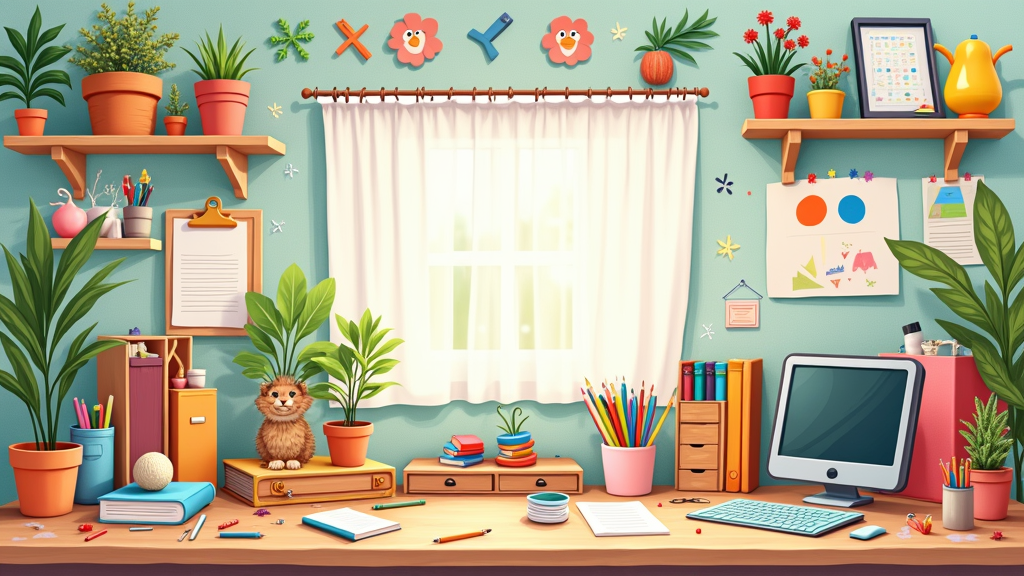Introduction
In every homeschool journey, I’ve learned that to keep homeschooling fun it is important to blend structure with creativity. The goal is to find a balance where lessons remain exciting and neither the kids nor the parent gets overwhelmed. I’ve experienced that little changes make a big difference. When you know how to keep homeschooling fun, it becomes easier to manage daily challenges and avoid feeling burnt out.
This article shares ideas and practical tips on how to keep homeschooling fun without overextending yourself. I’ll explain how to manage stress, design an engaging schedule, and create interactive learning experiences that spark curiosity. With real-life examples and relatable strategies, you’re sure to find approaches that fit your daily routine.
Keep Homeschooling Fun: Making Learning Engaging and Stress-Free
The idea behind keeping homeschooling fun is all about creating an environment where learning feels less like a chore and more like an adventure. I know that some days the workload can seem endless and exhausting. That’s why it’s important to incorporate activities and methods that bring joy to your daily routine. When learning is fun, your children are more likely to stay curious and motivated, and you can enjoy the teaching process yourself.
By breaking routines and mixing up subjects, you can challenge the typical day-to-day schedule. This approach gives everyone a chance to step away from monotonous tasks and jump into projects that spark interest. A consistent balance between fun and study not only keeps energy levels high but also helps in reducing the stress that may creep into homeschooling.
Understanding Burnout in Homeschooling and Its Impact
Burnout is a common experience among homeschool families. It shows up when the day-to-day demands drain energy and make it hard to stay positive. When you try to pack too much into your schedule or stick too rigidly to routines, burnout can sneak up on you. Knowing the signs of burnout is the first step to tackling it effectively.
Burnout may lead to tired eyes, irritability, and a lack of enthusiasm for learning. It can affect both the students and the parent. Recognizing these signs early can help you take a break or change your approach so you can continue to keep homeschooling fun. Taking regular breaks, adjusting expectations, and refreshing the routine are a few methods that help keep burnout at bay.
Practical Strategies to Keep Homeschooling Fun Without Burnout
When you focus on practical strategies that help manage daily tasks, you can easily overcome burnout. Small tweaks to your routine can have a big impact. Many families find that planning little activities throughout the day maintains energy and enthusiasm. Here are some strategies that have worked for me:
- Set realistic goals for each day to prevent feeling overwhelmed.
- Mix long study sessions with short, creative breaks.
- Create themed days that break from the daily routine, like nature or art days.
- Incorporate outdoor lessons whenever the weather allows.
- Use interactive methods such as experiments, crafts, or puzzles to bring lessons to life.
These ideas can help you keep homeschooling fun and prevent burnout. It’s important to remember that you don’t have to follow every suggestion. Try a few that resonate and then adjust based on what best suits your family’s schedule.
Tips to Keep Homeschooling Fun: Refresh Your Routine with Variety
One effective way to boost both enthusiasm and learning is to switch up your daily plan from time to time. For example, after a long period of intensive academic work, a spontaneous art project or a fun science experiment can revive energy levels. The key is to integrate changes gradually so that the routine remains dynamic. Taking time to add some variety can make each learning session feel like a fresh event that your kids look forward to.
Even a small change, such as switching to a hands-on project mid-afternoon, can reinvigorate the entire atmosphere. When you incorporate new themes or subjects now and then, it makes each day unique and exciting.
Strategies to Keep Homeschooling Fun Through Interactive Learning
Interactive methods are a staple in my approach to homeschooling. They work well in keeping kids engaged and breaking the cycle of monotony. Hands-on activities, educational games, and projects that involve family members all contribute to a lively learning environment.
For instance, you might set up a mini science fair in your living room, use everyday items for experiments, or plan a cooking lesson that teaches math and science concepts simultaneously. When learning becomes interactive, it’s easier to maintain interest and enthusiasm all day long.
Creating an Engaging Homeschool Environment
Designing your homeschool space with creativity and flexibility in mind is a practical way to keep homeschooling fun every day. I always suggest creating a dedicated space that is both organized and inspiring. Consider factors like natural light, a variety of work surfaces, and areas for both group and individual study.
An inviting space not only boosts morale but also sets the tone for a productive day. Every item, from colorful charts to engaging educational tools, plays a role in making your environment a hub for creativity and exploration. Personalizing the space with your child’s interests often allows learning to extend beyond textbooks and makes each study session feel like an exciting opportunity to learn something new.
Planning to Avoid Burnout and Keep Homeschooling Fun
A thoughtful schedule is vital for both keeping homeschooling fun and avoiding burnout. Planning your day with built-in breaks and transitions can help manage energy and focus. When the day is segmented into clear blocks, both the student and the teacher have opportunities to recharge, making it easier to handle longer days.
When planning, include time for creative activities such as music, art, or even a short walk outside. These breaks help prevent mental fatigue and allow your mind to process what has been learned. A balanced schedule ensures that every segment of the day serves a unique purpose, blending work with playful exploration.
Example of an Effective Daily Plan
This sample schedule is something many homeschool families can adapt to their needs:
- Morning: Start with a fun interactive lesson and a group discussion. Follow with hands-on activities that spark creativity.
- Mid-Morning: Take a break with a quick outdoor activity or a creative game session.
- Late Morning: Jump into focused subjects such as math or science with periodical interactive exercises.
- Lunch Break: Enjoy a healthy meal together with time to relax and share thoughts on the morning’s work.
- Afternoon: Switch to lighter subjects or project-based tasks that allow free expression.
- Later Afternoon: Wrap up the day with a review of lessons and planning for the next day.
This structure keeps homeschooling fun while giving everyone something to look forward to at different times of the day.
Interactive Learning: Engaging the Whole Family
One of the best ways to keep homeschooling fun is to involve the entire family in the learning process. I’ve often found that learning isn’t a one-way street. When siblings or even parents participate in a project, learning becomes a shared experience that is both rewarding and fun. Family projects can strengthen bonds and also teach valuable life skills like teamwork and communication.
For example, planning a home-based project such as creating a family garden or exploring local history through a scavenger hunt brings everyone together. These collaborative projects not only create memorable experiences but also make learning accessible and enjoyable for everyone involved.
Getting Creative: Activities to Keep Homeschooling Fun
Creativity plays an essential role in making homeschooling an enjoyable experience. I encourage incorporating a range of creative activities that support different learning styles. When children have the opportunity to express themselves through art, music, movement, and writing, it breaks the routine and builds a well-rounded skill set.
Try using arts and crafts projects that relate to your study topics, or explore music and physical movement as a way to reinforce lessons from history or science. These creative outlets ensure that every child finds a way to learn that resonates with them while keeping the energy high throughout the day.
Balancing Structure with Flexibility
One consistent challenge in homeschooling is finding the right mix between a structured approach and the freedom to explore. The secret lies in maintaining enough order to cover learning goals while leaving room for spontaneous creativity. This balance not only helps in managing stress but is also a key way to keep homeschooling fun.
A practical tip is to design a framework with flexibility built in. For example, allocate time slots for core subjects and remain open to deviations if a particularly exciting learning opportunity arises. Being adaptable means you can respond to both planned lessons and unexpected teachable moments, making every day both dynamic and enjoyable.
Additional Experiences: Lessons from the Frontline
Over the years, I have experimented with various methods to adjust and improve my homeschooling routine. Sometimes, unexpected challenges lead to creative solutions. For example, when a rainy day kept us indoors, we turned the living room into a makeshift science lab where we experimented with safe kitchen science projects. These experiences reminded me that flexibility is very important and that even unplanned activities can turn into memorable learning sessions.
Another experience involved incorporating community resources such as local museum visits or nature center trips. These outings allow both parents and children to step away from the everyday routine and experience learning in a new light. Such experiences help in reinforcing academic lessons while also nurturing creativity and critical thinking.
Adapting Your Learning Environment Over Time
As your homeschool journey evolves, so should your learning environment. It is really important to periodically reassess your space and schedule. Sometimes, small changes such as rearranging furniture or adding a bulletin board for displaying artwork can breathe new life into your homeschooling zone. This evolution ensures that the environment continues to reflect current interests and learning styles.
Adjusting your schedule to account for seasonal changes or new extracurricular interests can also make a big difference. Over time, these small adjustments add up, helping to reduce stress and keep everyone excited about learning. Every adjustment you make is a chance to refine your methods and enjoy the glow-up of adapting to your family’s changing needs.
Final Thoughts
The art of keeping homeschooling fun without burnout is a blend of thoughtful planning, engaging activities, and self-care. When you build variety into your routine, it lessens the pressure on both children and parents. Every day offers a new chance to explore, learn, and have fun. Small adjustments, even if they seem minor, can have lasting benefits in reducing burnout and maintaining high enthusiasm throughout the day.
By incorporating interactive lessons, creative projects, and regular breaks, you create an environment where learning becomes a shared adventure. Each family member can thrive with a balanced approach that values both academics and fun activities. Remember that the goal is to foster an atmosphere where learning remains exciting and stress stays minimal. Good planning, creativity, and collaboration truly make a difference.
Take time to experiment with new methods and adjust your routine as necessary. Homeschooling is a continuous adventure of discovery and adaptation, and every new day is an opportunity to level up your learning experience.
Additional Resources
- Article – The Powerful Benefits Of A Homeschool Mental Health Day
- Article – Homeschool Burnout: Recognize & Recharge When Needed
- Article – Self-Care Through Seasonal Traditions: Year-Round Ideas
When you click and purchase from any of our links, we may earn a small commission at no extra cost to you. For more details, please see our affiliate disclosure.


